
Evergreen Berberis: the Most Beautiful Varieties
DISCOVER OUR SELECTION
Contents
Evergreen Berberis offer foliage in dark green, which is very interesting for decorating the garden in all seasons. Depending on the varieties, their small leaves can be shiny, with smooth or dentate edges and spiny. Depending on their sizes, these bushes are perfect for creating a privacy and defensive hedge, in a shrub bed, a rockery, or as groundcover. They are also appreciated for their beautiful yellow-orange and fragrant flowering. Discover our selection of evergreen Berberis.
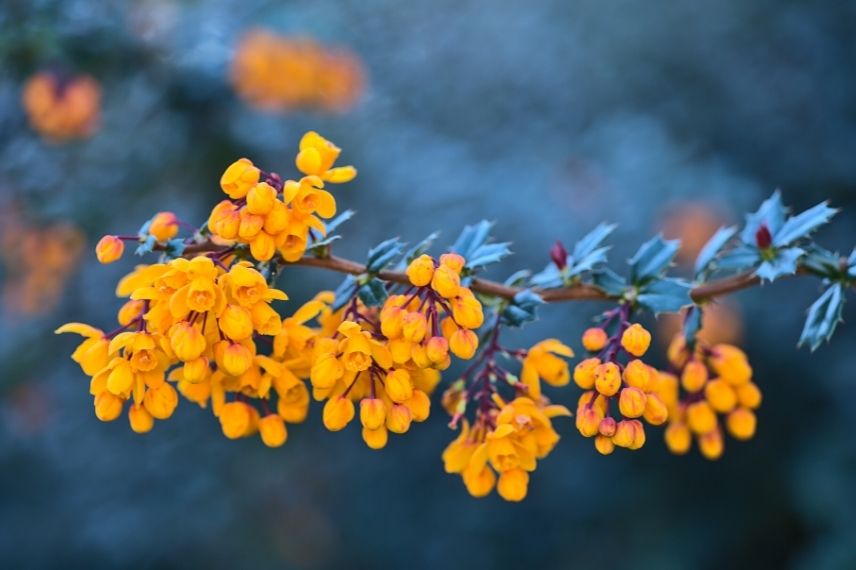
The beautiful foliage and flowers of Berberis darwinii
Berberis buxifolia 'Nana'
The Berberis buxifolia ‘Nana’ is a dwarf variety with a dense, bushy habit, forming a cushion 50 cm in all directions. Its lovely evergreen leaves are rounded, with smooth edges, and a glossy dark green, resembling those of boxwood. This shrub is also valued for its slightly thorny stems. From May to June, it produces a lovely flowering of small yellow, even orange flowers, which will give rise to purple-tinged berries in autumn. Unfussy, this barberry thrives perfectly in dry, calcareous, poor, and stony soil, preferably cool and well-drained. Hardy down to -23 °C, it enjoys a semi-shaded position in southern or western regions and full sun elsewhere. Its rounded shape makes it ideal for pot cultivation, borders, rockeries, on slopes, and in small gardens, alongside Phlox and Fleabane.

The Berberis buxifolia ‘Nana’ is a low-thorn and evergreen variety
Read also
When and how to prune barberry?Berberis darwinii
The Berberis darwinii is a vigorous variety with a bushy, dense, and spreading habit, capable of reaching 2.75 m in all directions. Its brown-red, spiny, and arching branches bear dark green, glossy, dentate foliage, which is also spiny and resembles small holly leaves. From April to May, it produces small orange-yellow flowers, clustered together, which will yield small bluish fruits. This low-maintenance bush adapts to all types of well-drained soil, including clay and even slightly calcareous or acidic conditions. It thrives in all exposures. Once well established, it proves resistant to temporary drought and can withstand frosts down to -15 °C. Its dense and bushy silhouette is perfect for forming a defensive hedge or as a backdrop in a shrub border, alongside a Japanese Quince or a Broom.
Discover other Berberis - Barberries
View all →Available in 2 sizes
Available in 1 sizes
Available in 2 sizes
Available in 1 sizes
Available in 1 sizes
Available in 1 sizes
Available in 3 sizes
Available in 1 sizes
Available in 1 sizes
Available in 3 sizes
Berberis julianae
The Berberis julianae stands out with its elongated, dark green, glossy, and spiny foliage, which takes on a beautiful reddish-orange hue in the cold of autumn. Its upright silhouette can reach 3 m in height and 1.5 m in width. Its small flowers are a lovely yellow colour, striated with red and slightly fragrant. Its flowering appears discreetly for the first time in spring, then a second time in autumn, before giving way to small bluish-black berries. Easy to grow and very accommodating, this Berberis can be planted in both full sun and shade. Hardy, it can withstand frosts down to -23 °C and occasional drought once well established. This bush is suitable for any type of well-drained soil, whether poor, heavy, dry, slightly clayey, or calcareous. This spiny and dense shrub is perfect for creating a defensive hedge alongside a Holly or a Mahonia.
Read also
How to create a Berberis hedge?Berberis linearifolia 'Orange King'
The cultivar linearifolia ‘Orange King’ stands out for its abundant spring flowering, one of the most spectacular among Berberis. Its slender, glossy green foliage is then covered with small, bright, silky orange flowers. It may bloom a second time in autumn, but in a more subdued manner. Its bushy and dense habit can reach 1.75 m in height and 1.20 m in width. Its arching branches give it a graceful yet slightly unruly appearance. This barberry adapts easily to well-drained, clayey soil, even slightly calcareous or acidic. Once well established, it tolerates occasional drought and cold down to -15 °C. Not demanding, it thrives in all exposures. The Berberis linearifolia ‘Orange King’ will naturally find its place in a free-form hedge or in a shrub border, alongside a Berberis thunbergii ‘Atropurpurea’ or a Ceanothus.
Berberis darwinii 'Nana'
The Berberis darwinii ‘Nana’ is a dwarf version of Berberis darwinii, not exceeding 90 cm in all directions. Its arching, brown-reddish branches bear small, glossy, evergreen leaves that are green in colour. Its foliage is dentate and thorny like that of holly, but in miniature. Delightful small yellow-orange flowers bloom in spring, and again in autumn. This shrub is easy to grow in any well-drained soil, even clayey and slightly calcareous or acidic. This barberry enjoys being planted in both sun and shade. Once established, it will tolerate occasional drought and frosts down to -15 °C. Its dense, spreading, and ramified habit makes it a perfect bush for borders, rockeries, groundcover, and small hedges. It will also be enhanced when placed in front of a shrub bed, alongside a Ceanothus, a Kerria, and a Broom.
Berberis lologensis 'Apricot Queen'
The Berberis lologensis ‘Apricot Queen’ is one of the largest varieties, reaching up to 3 m in all directions. It is also valued for its abundant spring flowering, with light orange flowers that may occasionally reappear in summer. The flowers are followed by small, dark red, shiny berries. Its evergreen foliage is dark green, glossy, dentate, and thorny, resembling small holly leaves. This bush has a bushy, dense, upright, and somewhat unruly habit with its arching branches. It thrives in sunny or partially shaded locations, in cool but well-drained soil. Undemanding, this barberry tolerates clay, acidic, neutral, and even calcareous soils. Once well established, it will withstand occasional drought and frosts down to -20 °C. It will find its place in a vibrant and defensive hedge or in a shrub border, alongside a Ceanothus with blue flowers for contrast and a Japanese quince.
For further reading
- Discover all our varieties of Barberry
- Find our article to learn everything about barberries: planting, pruning and maintaining
- Subscribe!
- Contents

































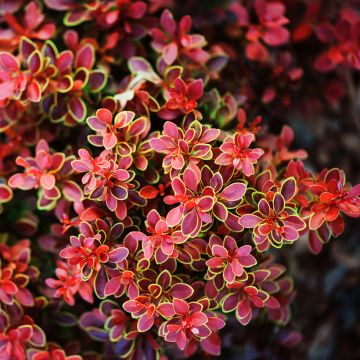

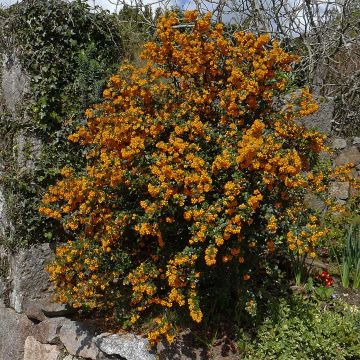

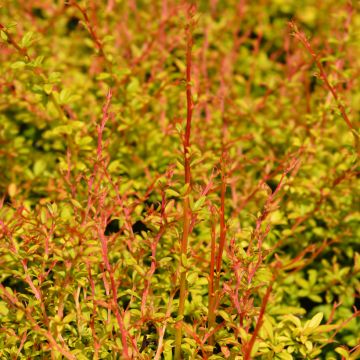
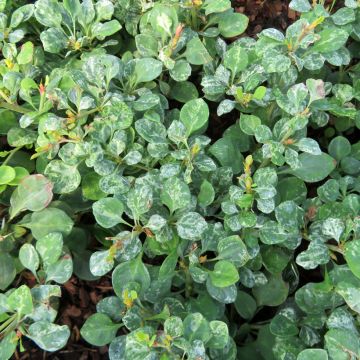
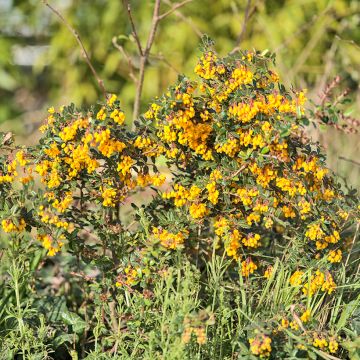

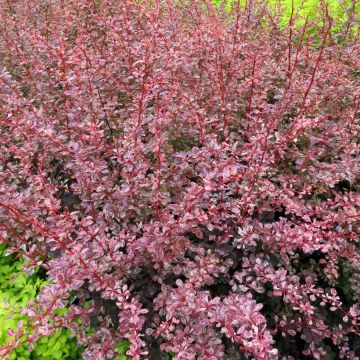
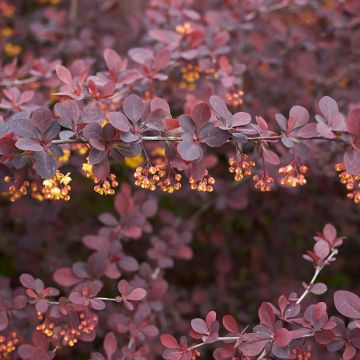


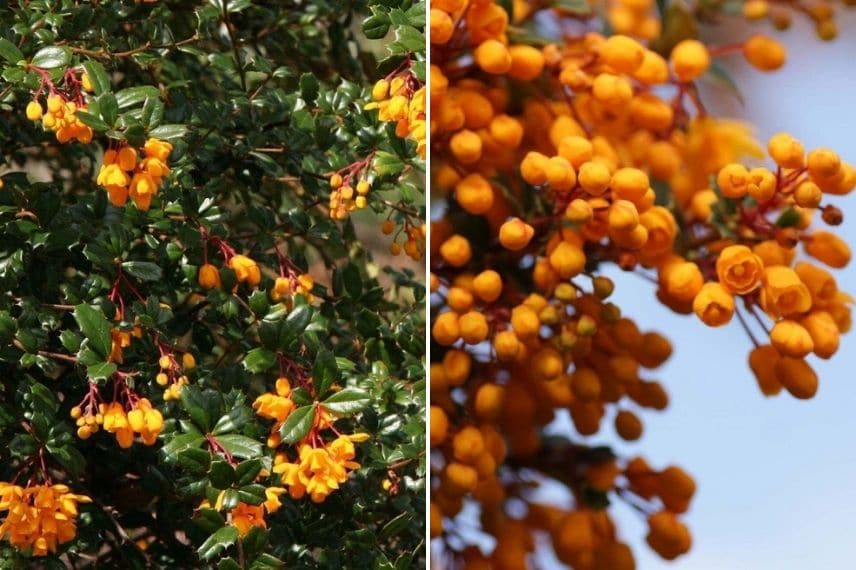
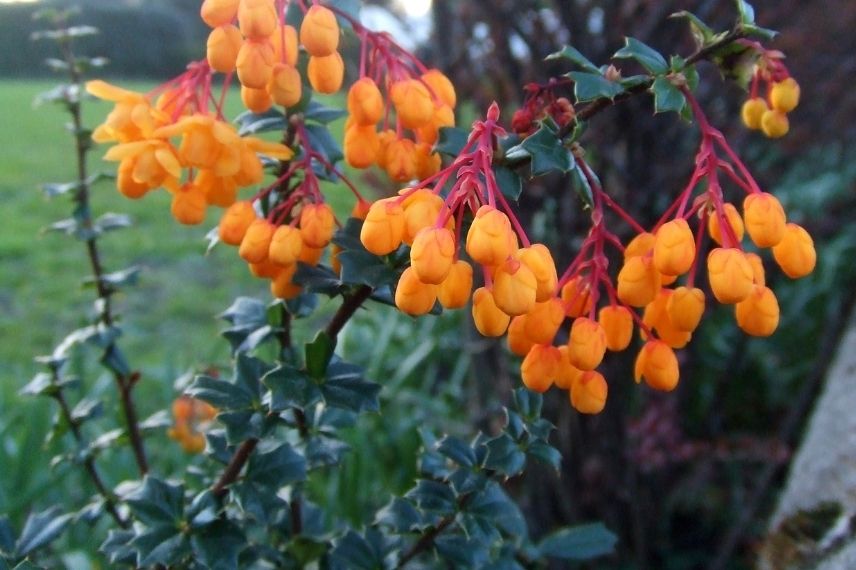
Comments